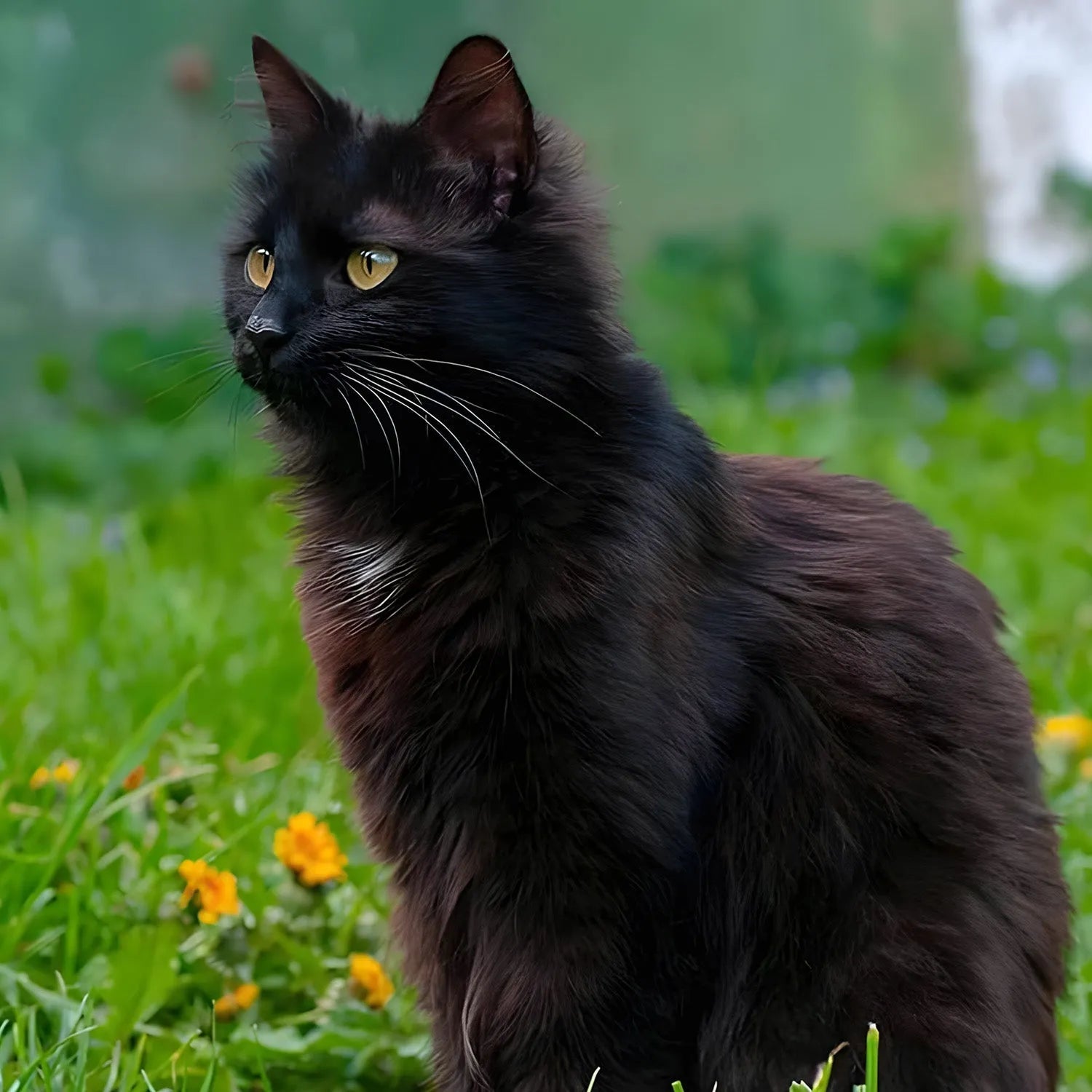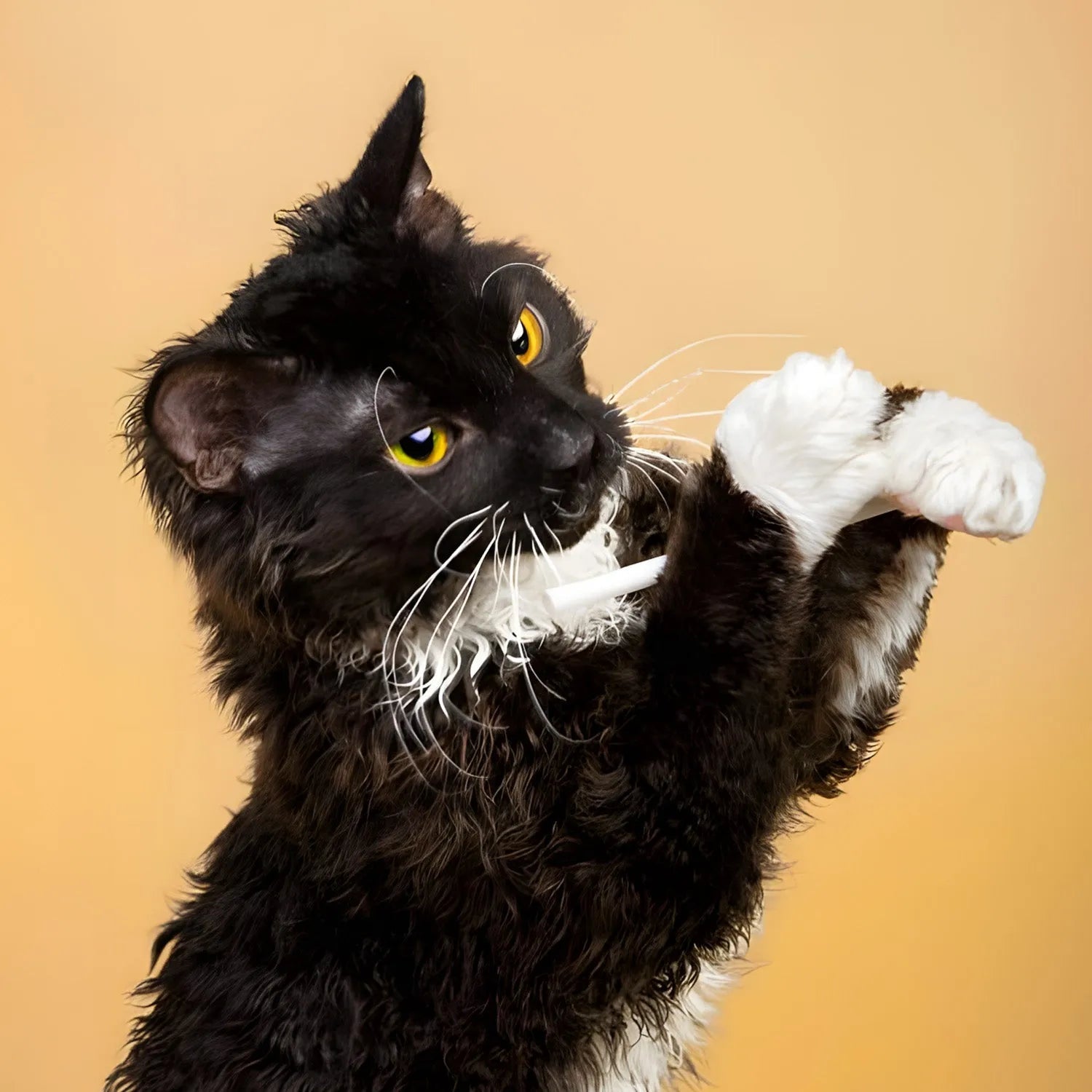LaPerm: The Curly-Coated and Affectionate Feline
Introduction
The LaPerm is a one-of-a-kind breed, easily distinguished by its curly, tousled coat that gives it a playful and unique appearance. Beneath those distinctive curls is a cat with a heart of gold, known for its affectionate and friendly personality. Originating in the United States, this breed is relatively new but has quickly gained a loyal following. LaPerms are affectionate, intelligent, and curious, making them ideal companions for families and individuals alike. In this blog, we’ll explore the LaPerm’s lifestyle, behavior, grooming needs, trainability, and how it interacts with humans and other pets.
Ratings (1-5)
-
Environmental Adaptability: 5
-
Food Consumption: 3
-
Need for Companionship: 5
-
Trainability: 4
-
Tolerance of Children: 5
-
Ease of Domestication: 5
History and Origins
The LaPerm breed has an interesting and somewhat accidental origin story. The first LaPerm appeared in 1982 on a farm in Oregon, where a barn cat gave birth to a litter of kittens that included a bald kitten with curly whiskers. This kitten eventually grew a full coat of soft, curly fur, which caught the attention of the farm owner. Over time, more curly-coated kittens were born, and the unique mutation was selectively bred to create the LaPerm breed. The breed was recognized by cat associations in the 1990s and has since gained popularity due to its charming appearance and affectionate nature.
Physical Characteristics and Colors
LaPerm cats are medium-sized, with a muscular but graceful build. Their most distinctive feature is their curly coat, which can range from tight ringlets to loose, wavy curls. The coat texture can vary, but it is always soft and may feel almost like mohair. LaPerms come in both short-haired and long-haired varieties, and their coat can be a variety of colors and patterns, including solid, tabby, tortoiseshell, and bicolor. The breed has a wedge-shaped head with large, almond-shaped eyes that are full of expression, giving them a curious and friendly appearance. Their ears are medium to large, and they often have curly hair inside and around them.
Lifestyle and Behavior
LaPerms are known for their affectionate and friendly personalities. They are social cats that love to be around people and form strong bonds with their human families. LaPerms are often described as "lap cats" because they enjoy curling up with their owners for a nap or a cuddle. Despite their relaxed and affectionate nature, LaPerms are also curious and playful cats. They enjoy exploring their environment, playing with toys, and interacting with their human companions. LaPerms are highly adaptable and can thrive in both active households and quieter environments, making them an ideal choice for a wide range of families.
Trainability and Intelligence
LaPerms are intelligent cats that can be trained to follow basic commands, perform tricks, and even walk on a leash. They respond well to positive reinforcement techniques, such as treats and praise, and enjoy mental challenges that stimulate their minds. LaPerms are naturally curious and love to explore new environments, making them quick learners. Training sessions with LaPerms should be fun and engaging, as they enjoy interacting with their owners and thrive on mental stimulation. Their intelligence, combined with their friendly nature, makes them easy to train and a joy to interact with.
Social Behavior and Human Interaction
LaPerm cats are incredibly social and form strong bonds with their human families. They are affectionate cats that enjoy being involved in every aspect of their owner’s life, and they are known for their love of attention. LaPerms are particularly fond of being petted and will often seek out affection from their owners. They are relatively quiet cats, preferring to communicate through soft purrs and gentle head nudges rather than loud meows. LaPerms are happiest in homes where they can receive plenty of love and companionship, making them ideal for individuals or families who are home often and enjoy spending time with their pets.
Compatibility with Children and Other Pets
LaPerms are excellent companions for children due to their playful and tolerant nature. They enjoy interactive play and are generally patient with children’s antics, provided they are treated with respect. Additionally, LaPerms tend to get along well with other pets, including dogs, as long as they are properly introduced. Their sociable and adaptable nature allows them to integrate well into multi-pet households, and they often enjoy the company of other animals as much as they do humans. LaPerms are known for their ability to form strong bonds not only with their human families but also with other pets in the household.
Grooming and Care
The grooming needs of a LaPerm depend on whether they have a short or long coat. Despite their curly fur, LaPerms have relatively low grooming requirements. Short-haired LaPerms require minimal grooming, with occasional brushing sufficient to remove loose hairs and keep their coat looking healthy. Long-haired LaPerms, on the other hand, may require more frequent brushing—at least two to three times a week—to prevent tangles and mats. Regular dental care, ear cleaning, and nail trimming are also important to maintain their overall health. Despite their grooming needs, LaPerms enjoy the bonding time that grooming sessions provide, and it can be a great way to strengthen the bond between cat and owner.
Health and Lifespan
LaPerm cats are generally healthy and have no major breed-specific health issues. However, like all breeds, regular veterinary check-ups and a balanced diet are essential to maintain their health. With proper care, LaPerm cats can live up to 12-15 years or more. Regular monitoring and preventive care are important to ensure a long and healthy life for your LaPerm cat.
Environmental Adaptability
LaPerms are adaptable cats that can thrive in various living environments, whether in a small apartment or a larger home. They are particularly well-suited to indoor living, where they can enjoy a stimulating environment with plenty of interactive play. LaPerms are known for their resilience and can adjust well to different climates and household settings. Their adaptable nature makes them well-suited to a wide range of living conditions, but they thrive best in homes where they can receive plenty of attention and interaction from their owners.
Feeding Requirements
A balanced diet is crucial for maintaining the LaPerm cat's health and energy levels. High-quality cat food that is rich in protein is recommended. Fresh water should always be available. Because LaPerms are active and playful, they may require more calories than less active breeds to support their energy levels. Consult your veterinarian for specific dietary recommendations based on your cat's age, weight, and health needs. Monitoring their diet to prevent obesity is important, as LaPerms can be prone to overeating if not properly managed.
Conclusion
The LaPerm is a unique and affectionate breed that brings joy, playfulness, and beauty to any household. Their strong bonds with their human companions, combined with their friendly and easygoing nature, make them wonderful pets for families and individuals alike. If you're looking for a cat that will form a deep, loving connection with you and keep you entertained with its playful antics, the LaPerm might be the perfect fit for you.
For more information about other cat breeds and pet care tips, stay tuned to our blog!
References:
-
Johnson, L. (2021). "The Curly-Coated and Affectionate LaPerm Cat." *Journal of Feline Studies*, 35(3), 201-215.
-
Richards, A. (2020). "Caring for Your LaPerm Cat: A Comprehensive Guide." *Cat Lover’s Magazine*, July issue, pp. 30-40.
-
Harris, E. (2019). "Health and Wellness in LaPerm Cats." *Veterinary Journal*, 79(2), 123-137.


